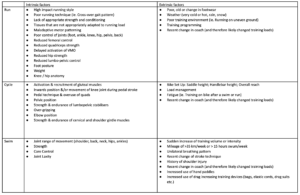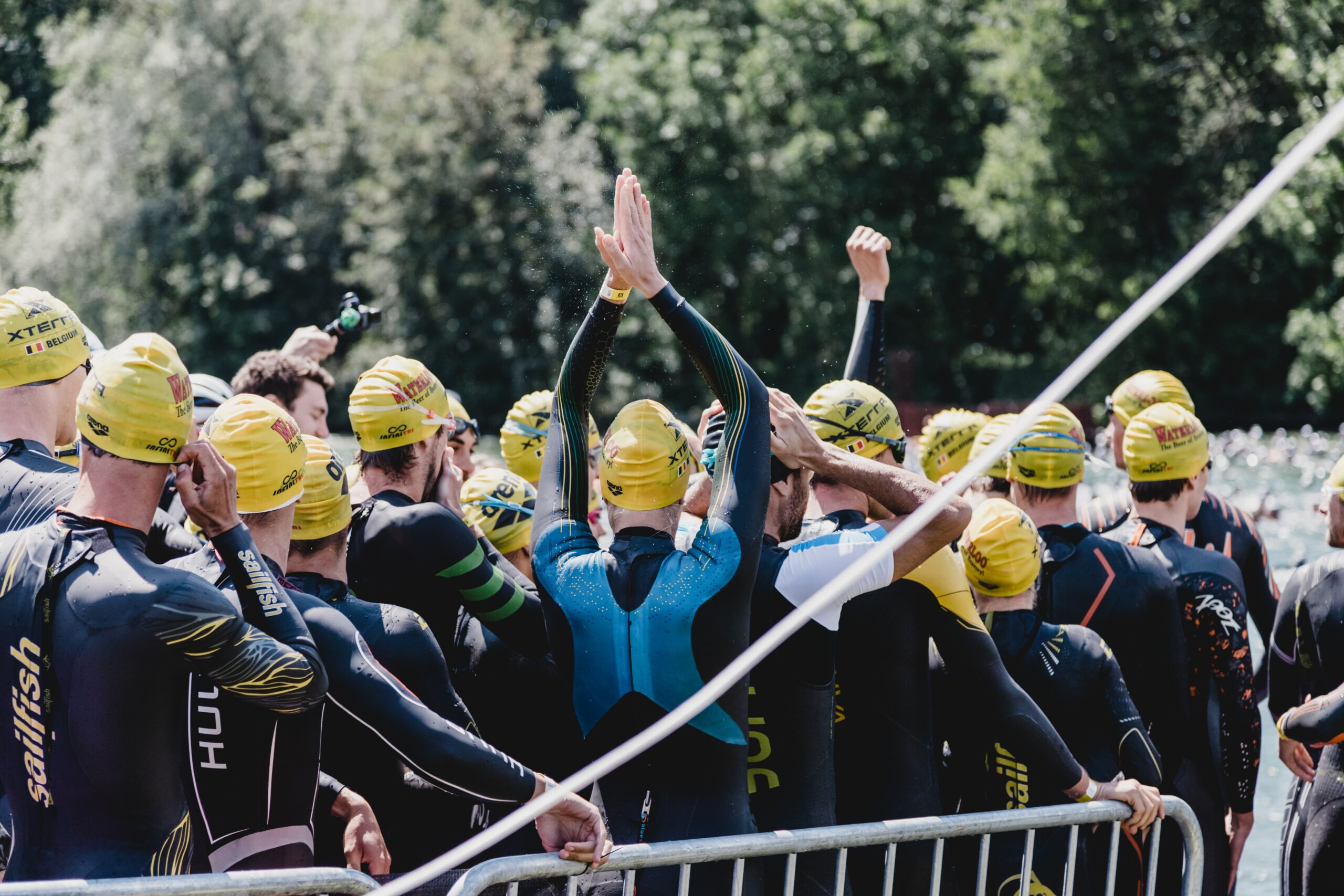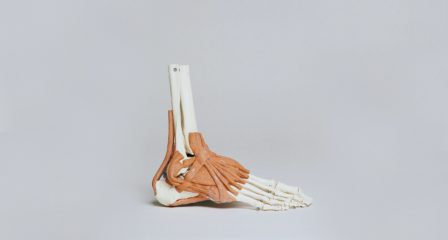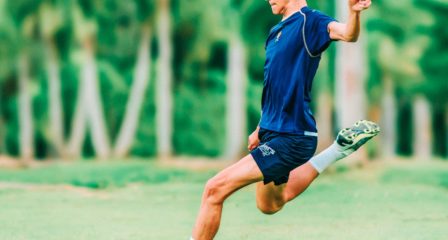Written by Physiotherapist, Darby Graham.
As a sport triathlon has steadily become more popular since its inception in the 1970s. Today, there are over 100,000 athletes competing in Australia. Due to the extreme demands placed on the body across the three disciplines, many athletes experience injuries as they train and compete. So, what are these injuries and why do they occur?
THE FACTS:
- Injury incidence is reported to be anywhere between 37% and 91%, with training injuries accounting for 75%-83% of all injuries sustained.
- 36%-85% of all injuries occur in the lower limb. With knee injuries (14%-63%) and foot/ankle injuries (9%-35%) making up the majority of these injuries.
- Back (72%) and shoulder (19%) have also been reported as common injuries when looking at those who compete in Ironman Triathletes alone.
- The running phase of training has the highest injury risk of the 3 phases, with overuse injuries more likely with running and acute injuries more common during cycling.
- 20% of triathletes reported an injury severe enough to stop training or racing:
- 17-21% needed to stop swimming
- 26-75% needed to stop cycling
- 42-78% needed to stop running
- The highest risk athletes are those who come from a swimming and cycling background, as they lack running experience and the muscle elasticity required for running.
- For every extra hour per week of preseason running there is a 12% increased risk of competition season injury.
- There is a significantly higher risk of injury and illness in female triathletes, and less experienced triathletes were more likely to occur an injury in competition.
- Longer distance triathlons have a higher injury risk than shorter distance
- The shorter the total performance time, ie. the quicker an athlete completes the race, the higher the chance of injury is.
- Overuse is the most common cause of triathlon injury, ranging from 41%-91% of injuries. These types of injuries tend to be most common in non-elite athletes.
BUT WHY ARE INJURIES SO COMMON?
The factors associated with triathlon injuries have been extensively researched. Essentially, there are many factors that can contribute to an injury, both intrinsic and extrinsic. Intrinsic factors are those individual differences that make someone more susceptible to injuries; whilst extrinsic factors are those environmental factors that influence injuries. The table below outlines both intrinsic and extrinsic factors of each of the three triathlon disciplines that can influence injury.

Other factors thought to influence rate of injury include:
- Triathlon experience – the longer you have competed in triathlon, the higher risk you are at for developing an injury.
- Training hours – Those who trained more than 15 hours a week were more than twice as likely to develop an injury when compared to those who trained 8-10 hours per week. Those training less than 7 hours per week were also at higher risk of injury. This was thought to be secondary to poor conditioning for the sport.
- Previous injury – 38% of athletes injured during the competition season sustained an injury in the 6 months prior to the triathlon season. This means they are 2.5 times more likely to suffer an injury during competition season.
- Transition phases – transitioning from swimming to cycling; cycling to running.
TYPES OF TRIATHLON INJURIES:
As there are so many variables in triathlons, there are many possible injuries that can occur both during training and racing. While acute injuries occur most commonly during racing, 80-85% of all injuries are expressed as functional overuse.
Common injuries include (but are not limited to):
RUNNING INJURIES:
- Foot/Ankle injuries: Joint sprain (ie. Ankle sprain), stress fracture, plantar fasciitis, Achilles/peroneal tendinopathy (achilles tendinopathy has been shown to be seen in up to 27% of triathletes), medial-tibial stress syndrome (MTSS), muscle strains (ie. Calf)
- Knee injuries: patellofemoral pain, patella tendinopathy, ITB friction syndrome
- Hip/pelvic injuries: bursitis, gluteal/hamstring tendinopathy, stress fracture (ie. neck of femur), impingement, sacroiliac joint pain, myofascial pain
- Lower back injuries: facet joint irritation, intervertebral disc injury, myofascial pain
CYCLING INJURIES:
- The knee is the most common site of overuse injury amongst cyclists at all levels. Symptoms are most commonly related to the patella-femoral joint, however there are other potential local tissue contributors including ITB, patella fat pad, infrapatellar branch of saphenous nerve, prepatellar bursa etc.
- Low back pain is the second most frequent injury type seen in triathletes, with cycling being a major risk factor, due to the sustained flexed positions. It has been shown that cyclists with low back pain adopt a more flexed position than those without. Interestingly, the majority of triathletes with back pain also had another injury present at the same time.
- Neck & shoulder pain is commonly provoked by the sustained postures required whilst cycling and is more common in recreational cycling populations. The position of head, neck and shoulders often results in ischaemic pain due to reduced blood flow & dependent on riding position, tissues can impinge resulting in pain and discomfort.
- There is currently no strong evidence relating any measure of the bike, body or load to overuse pain or injury.
SWIMMING INJURIES:
- Shoulder injuries are the most common injuries that occur in swimmers. Poor control, lack of strength, and limited/excess range of movement most commonly contribute to shoulder pain.
- The neck can become susceptible to injuries if you are only breathing to one side. This loads the upper body asymmetrically, and can alter muscle/joint biomechanics.
- The thoracic spine is susceptible to injuries in a similar manner to the neck. An increase or change in loading can alter muscle and joint biomechanics and contribute to an injury.
THERMAL INJURIES:
- Dehydration, exhaustion, heat cramps, and heat stroke are seen in triathlons secondary to the length of the event or if competing in a hot environment.
- Hypothermia (when core body temperature drops enough to affect body function) secondary to cool water temperatures, time in the water and increased wind.
- Hyperthermia (abnormally high core body temperature) is a potentially life threatening event related to high humidity and temperature during a race, but it is a rare occurrence.
SUMMARY:
The risk of developing an injury as a triathlete is high. This high risk is secondary to the varied demands that are placed on the body across all three triathlon disciplines. Due to these three disciplines, training demands and stresses on the body are high, therefore placing the body at an increased risk of developing an overuse injury.
To reduce the risk of developing an injury, our bodies must function efficiently and effectively. Not only will weakness, laxity, tightness, and stiffness affect the way the body functions, strengths and weaknesses in different aspects of competition will also affect the way you are loading, and therefore the way you function.
Load management is a vital component of injury avoidance and management in triathletes. Ensuring your tissues have the appropriate strength and conditioning to manage the loading they are subject to is extremely important. The competition off-season is the optimal time to address specific strengths and weaknesses to minimise the likelihood of injury during the competitive season.



